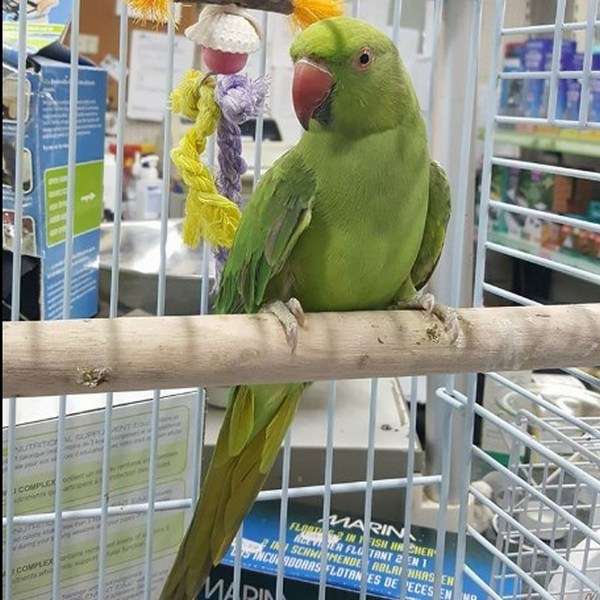Parakeets are popular for their charismatic behavior and outstanding mimicking potential. They come in a wide variety of color mutations. Parakeets have powerful personalities. They require lots of hands-on training, particularity when they are young. With lots of positive reinforcement training, and Parakeets can make an outstanding companion., Parakeet has an average life span of 7 to 10 years but can live longer with proper care.
They need plenty of room to climb and fly, so purchase the largest cage you can. Parakeets fly horizontally, so make sure you choose a cage with ample horizontal measurements.
Metals such as brass and zinc can be toxic to birds, so a stainless steel cage is the best and safest option for housing your Parakeet. Ideally, the minimum cage size for this bird would be 25’’ long, 21’’ wide and 29’’ high with ½’’ wire spacing.
PARAKEET COURTSHIP AND BREEDING BEHAVIOR
Once paired up, parakeets have reached peak fitness when the cock’s cere is a vivid blue and the hen’s is a chocolate brown. They will begin to perch, feed and preen together. Providing bathing water will help them get in the mood for mating. The male will display to his mate, this will include lots of head-bobbing and feather-fluffing, and his pupils will often dilate to pinpricks. He accompanies this with a bubbling, liquid song, often working himself up to a hyperactive state.
The female will watch and listen to these antics, but will not join in. Female birds have their own mating season chirrup, and the male will often join in when she shouts it.
Parakeet Mating
The male will persistently court his mate, tapping her beak with his own to get her in the mood. If all wooing efforts have been successful, the female will eventually lift her tail in the air, raising her wings a little to let the male know he has the go-ahead. The cock bird will then “tread” the hen by performing the “cloacal kiss” – touching the vent or cloaca (the all-purpose repository for sperm, droppings, and egg-laying, common to most birds), and rubbing from side-to-side. The process is swift, but will take place several times throughout that day.

Parakeet Not Mating
If you notice that there is no action between your two birds, they might be too young, or maybe even too old. If they are still bickering after a few days, the two birds simply don’t get along. In some rare cases birds may opt to be celibate, most likely due to suppressed hormones. This may be a temporary condition, or it may be a saintly lifetime commitment.
Parakeet Nesting Behavior
Parakeets are not at all fussy when it comes to nesting. The female will inspect the nesting box; or if one is not provided, she will start scratching around the corners of the cage or aviary for a suitable spot. Other members of the parrot family like to shred paper and collect dried grass and line their nests with it, but not parakeets. If you do put these items in the nesting box to make it warmer and softer, that’s fine, but don’t expect the female to help you.
A hen who is feeling the hormonal surge of the mating season may start searching for nesting places outside the cage, if she is allowed free-flight in a room. The space behind the books on a bookshelf is a favourite spot. This behaviour is sometimes accompanied by heightened aggression. If you want, you can take her mind off nesting by confining her to the cage for a few days. Check her diet and ty to lay off the high protein foods, as these tend to bring on the nesting urge.
Parakeet Behavior Before Laying Eggs
Once the act of mating has finished, the hen will head to the nest box, arranging the minimal furnishings, and emerging only to eat and feed on the mineral block and cuttlefish. The male will also start to feed her regurgitated food as soon as she is nest-bound. Her droppings may be larger and have a slightly different color due to the proteins and minerals she is stocking up on.

